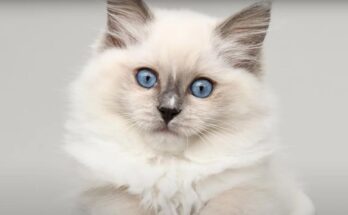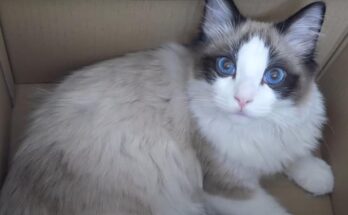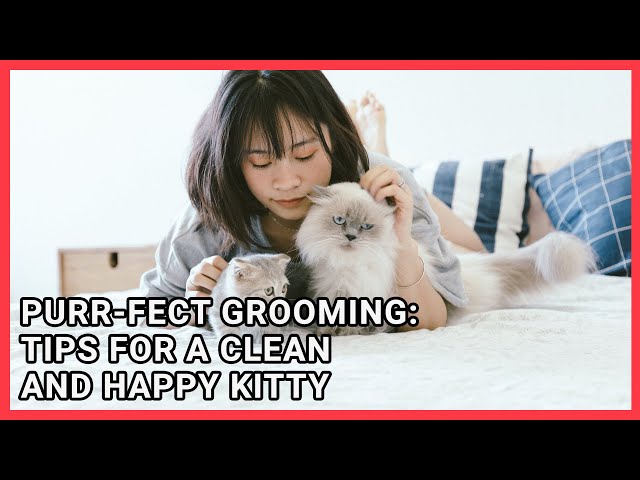Determining whether a Ragdoll or Ragamuffin cat is better depends on the owner’s preferences. Both breeds are known for their friendly and laid-back personalities.
Choosing between a Ragdoll or a Ragamuffin cat comes down to subtle differences and personal choice. Ragdolls, loved for their striking blue eyes and colorpoint coats, are one of the largest cat breeds, famed for their docility and affectionate nature.
Ragamuffins share many of these endearing qualities, with their plush rabbit-like fur and diverse color patterns setting them apart. Their gentle and friendly demeanor makes either breed an excellent choice for families or individuals seeking a sociable feline companion. Deciding which is better involves weighing factors such as appearance, size, and grooming needs to see which aligns best with your lifestyle and preferences. Both breeds bring warmth and joy into homes, making either a delightful addition to a loving household.
Introduction To Ragdoll Cats
Welcome to the enchanting world of Ragdoll Cats, renowned for their serene nature and stunning blue eyes. These feline beauties boast a plush coat and a charming disposition, appealing to cat lovers worldwide. Let’s delve into the allure of these gentle giants, learn their origins, and explore their distinctive characteristics.
History And Origin
The Ragdoll breed emerged in California during the 1960s. Credit goes to breeder Ann Baker. She bred a white, long-haired domestic cat named Josephine with other free-roaming cats. These unique cats were famous for their docile temperament and striking point coloration. Baker’s breeding program was the foundation for the Ragdoll breed we adore today.
Physical Characteristics
Ragdolls are large, captivating creatures with semi-long coats. They have a sturdy build and a sweet face. Their fur feels silky and requires minimal grooming. Ragdolls come in various colors and patterns, including seal, chocolate, and more.
Eyes: Their eyes are large, vivid blue, and truly captivating.
Body: They have a powerful, muscular body with a broad chest and heavy bones.
Coat: A standout feature is their plush, rabbit-like coat. It’s soft to the touch and extensively dense.
| Feature | Description |
|---|---|
| Size | Large |
| Weight | 10-20 pounds |
| Life Expectancy | 12-15 years |
| Coat Type | Medium to Long, Silky |
Ragdoll cats are truly a delight to have around. With their gentle nature, striking features, and loving personalities, they make excellent companions for individuals and families alike.
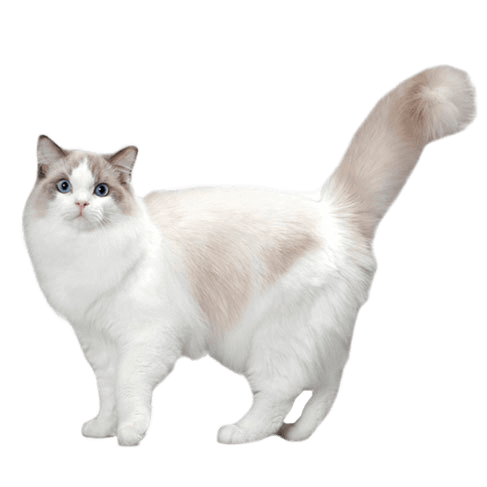
Credit: www.petplan.co.uk
Introduction To Ragamuffin Cats
The Ragamuffin cat is a bundle of joy with a heart as soft as their plush fur. Beloved for their friendly nature, these felines make purr-fect companions. Let’s explore the world of Ragamuffin cats, from their development to their distinctive features.
Breed Development
Ragamuffin cats stem from the Ragdoll breed. In the 1990s, breeders wanted to expand the gene pool. They introduced new colors and patterns. This led to what we recognize today as the Ragamuffin.
- Year of recognition: Accepted by major cat associations in the late 1990s.
- Breeding: Crossbred with Persians, Himalayans, and other longhaired breeds.
- Result: A diverse and healthy breed with unique traits.
Distinctive Features
Ragamuffins are unique in many ways. They are known for their large, expressive eyes and luxurious coat.
| Feature | Description |
|---|---|
| Eyes | Walnut-shaped, can be any color |
| Fur | Long, dense, and silky |
| Size | Large and muscular, yet soft |
| Temperament | Gentle, calm, and affectionate |
Their temperament sets them apart too. Ragamuffins bond closely with their humans. They are ideal for families and singles alike.
Temperament Showdown
Cat enthusiasts often wrestle with a choice between two adorable fluff balls: Ragdolls and Ragamuffins. Each breed brings a flood of affection and a host of unique personality traits to the table. Let’s leap into the heart of the purring debate with a Temperament Showdown between these two charming felines.
Ragdoll Personality Traits
Ragdolls are big bundles of love known for their gentle and laid-back nature. With these sweethearts, expect a daily dose of cuddles and calm companionship.
- Affectionate – Never shy about showing love.
- Relaxed – Champions at lounging around the house.
- Intelligent – Quick to pick up tricks and games.
- Social – Always ready to greet guests with a soft meow.
- Adaptable – Ease into new environments smoothly.
Ragamuffin Behavioral Aspects
Don’t let the name fool you; Ragamuffins are anything but ragged. They parade a playful and endearing personality that captures hearts without a hitch.
- Playful – Love interactive toys and games.
- Loyal – Attach to their families like velcro.
- Friendly – Make friends with kids, other cats, and even dogs.
- Sweet-natured – Overflow with kindness and patience.
- Curious – Explore the nooks and crannies of their home with glee.
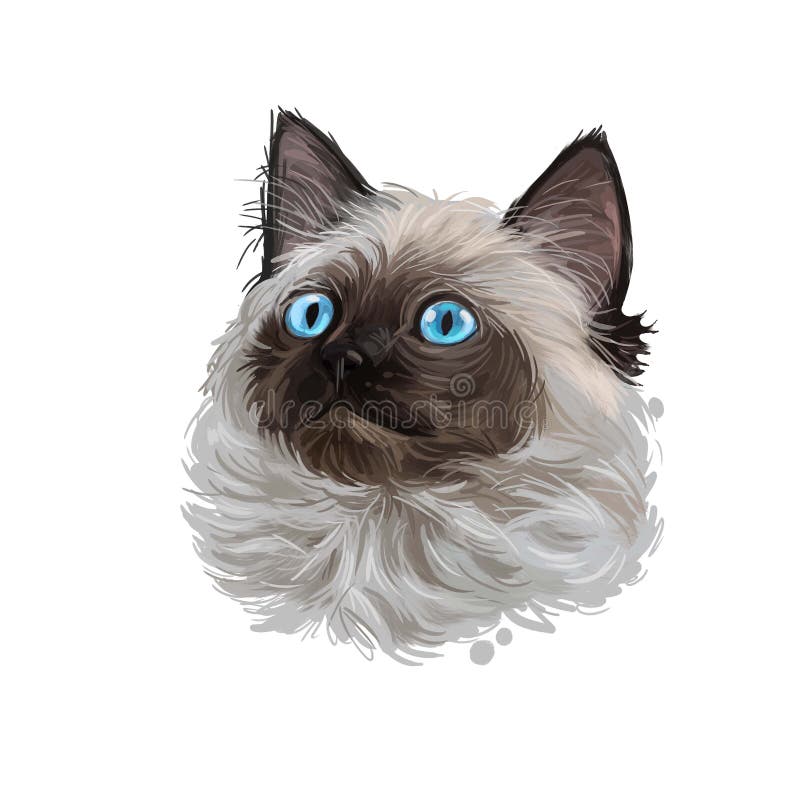
Credit: www.dreamstime.com
Care And Grooming Needs
Caring for and grooming a cat goes beyond maintaining a clean coat. It’s about bonding, checking their health, and ensuring comfort. Ragdolls and Ragamuffins, with their plush coats, particularly benefit from regular grooming. Let’s dive into their specific care and grooming needs.
Ragdoll Grooming Routine
Ragdolls boast a magnificent semi-long coat that requires regular attention to stay silky and matte-free. Their grooming routine typically includes:
- Weekly brushing with a stainless steel comb or brush.
- Dealing with tangles gently to avoid discomfort.
- Occasional baths, maybe once a month, with cat-friendly shampoo.
Clipping their nails every few weeks is also essential.
It is crucial to inspect and clean their ears to prevent infections.
Regular dental care with brushing is ideal.
Ragamuffin Care Considerations
With a slightly denser coat, Ragamuffins may need a bit more grooming to avoid knots. Their care plan might entail:
- Daily combing with the right tools to maintain the coat’s allure.
- Spot cleaning when necessary with a damp cloth.
- Bimonthly baths can help keep their thick fur fresh.
Keeping nails short and ears clean is as important here as with the Ragdoll.
Dental hygiene practices help in preventing periodontal issues.
Health And Lifespan Comparisons
Knowing the health and lifespan of cat breeds is key when choosing a pet. Ragdolls and Ragamuffins are popular choices. Yet, each breed has distinct health traits to consider. Let’s compare them.
Common Health Issues In Ragdolls
Ragdoll cats are not just plush toys, but living, breathing animals that require care. They are known for their sweet demeanor and striking blue eyes. But, like any breed, Ragdolls face certain health issues:
- Hypertrophic Cardiomyopathy (HCM): a heart condition that’s common among Ragdolls.
- Polycystic Kidney Disease (PKD): kidney issues that can affect your Ragdoll’s health.
- Feline Infectious Peritonitis (FIP): a viral disease you’ll want to be cautious of.
Regular vet check-ups can help catch these issues early.
Ragamuffin Longevity And Health
Ragamuffins are known for being robust cats with a long lifespan. They share a history with Ragdolls. Still, they display a different health profile:
- Weight Management: They can get overweight, so it’s important to control their diet.
- Heart Conditions: Just like Ragdolls, monitoring for heart health is necessary.
- Joint Health: Their sturdy build needs support for healthy joints as they age.
With proper care, Ragamuffins commonly live well into their teens. This breed thrives with love, play, and regular vet visits. They bring joy and companionship for many years.
| Breed | Average Lifespan | Key Health Checks |
|---|---|---|
| Ragdoll | 12-17 Years | Heart, kidneys, viral diseases |
| Ragamuffin | 13-18 Years | Weight, heart, joints |
Both Ragdolls and Ragamuffins bring a unique set of health considerations. With love and proper care, they can lead full, happy lives by your side.
The Ideal Home Environment
Choosing the right cat for your home is vital. Ragdolls and Ragamuffins are popular choices, each requiring specific environments to thrive. Understanding these needs ensures a happy and healthy cat.
Ragdoll’s Ideal Living Situation
Ragdolls are known for their gentle nature and friendliness. They do best in calm and loving settings.
- Peaceful household with minimal chaos
- Space to lounge, especially on soft surfaces
- Regular companionship, as they are social creatures
Keep your Ragdoll indoors to protect them. They are not street smart. They love to follow their humans around the house. Safety and love are their main needs.
Ragamuffin’s Adaptability To Home Life
Ragamuffins are versatile and fit into various living situations. Their easy-going temperament makes them suitable for many homes.
| Feature | Ragamuffin Adaptability |
|---|---|
| Affection Level | High – loves snuggles and attention |
| Kid-Friendly | Yes – patient with children |
| Other Pets | Gets along with cat-friendly dogs and other pets |
| Activity Needs | Moderate – enjoys playtime but also lounging |
Ragamuffins do well in homes with tight bonds. They can adapt to both active households and quieter environments. Ensure they have plenty of toys and climbing spaces. They will become your most loyal companion.
Price And Adoption Guidance
Choosing between a Ragdoll and a Ragamuffin cat is exciting. Both breeds have unique qualities and charm. Price and adoption are key factors in your decision. This guidance compares costs and adoption processes for both cat breeds.
Cost Of Ragdoll Ownership
Ragdoll cats are known for their stunning blue eyes and silky fur. The price can be a big factor for families. Consider these costs before bringing a Ragdoll home:
- Initial Cost: Ragdoll kittens typically cost between $800 to $2000. Rare colors or patterns may cost more.
- Vet Checkups: Regular health checks are crucial. Factor in yearly vet costs of around $100 to $200.
- Food and Supplies: High-quality food and cat essentials add up. Budget monthly costs of $50 to $100.
- Grooming: Ragdolls’ coats need regular grooming. Set aside up to $50 monthly for grooming tools or professional services.
- Insurance: Optional pet insurance can prevent financial stress if your Ragdoll gets sick. Monthly premiums can range from $15 to $30.
Total ownership cost can vary greatly. Plan your budget wisely.
Adopting A Ragamuffin Cat
Ragamuffin cats are adorable and known for their friendly nature. Adoption is a great way to welcome one into your family. Follow these steps:
- Research reputable shelters or Ragamuffin rescues. Ragamuffin-specific rescue groups might have more options.
- Visit potential cats and see how they interact. Their personality should be a good fit for your home.
- Understand the fees involved. Adoption fees can range from $75 to $150. These often cover initial medical exams.
- Prepare your home for your new friend. Ensure you have space and a quiet environment for them.
- Complete the necessary paperwork. Provide information and agree to the shelter’s terms to adopt.
Adopting gives a cat a second chance for a happy life. Your heart and home will grow with their addition.

Credit: www.hillspet.com
The Verdict: Choosing The Right Cat For You
Choosing between a Ragdoll or Ragamuffin cat brings a flurry of questions. Both breeds boast plush coats and charming personalities, but subtle differences may sway your decision. Discover which feline companion aligns with your lifestyle and preferences to find the purr-fect match!
Evaluating Your Lifestyle
Consider these factors when deciding:
- Space: Both breeds adapt to apartments and houses.
- Company: Ragdolls and Ragamuffins thrive on social interaction.
- Activity Level: Ragdolls tend to be more laid-back, while Ragamuffins are slightly more energetic.
- Care: Both require regular grooming.
Match your daily routine to the cat’s needs. Can you dedicate time for play and affection? Your commitment shapes the ideal choice.
Making The Final Decision
Follow these steps to choose:
- Assess your living environment.
- Understand the traits of each breed.
- Budget for care, including grooming and vet visits.
- Interact with both breeds, if possible.
Meet both Ragdolls and Ragamuffins. Observe their behaviors. Picture them in your home. Consider their future as part of your family. Trust your instincts. Let your heart and mind guide you to your feline friend.
Frequently Asked Questions For Which Is Better Ragdoll Or Ragamuffin
What Is The Difference Between A Ragdoll And Ragamuffin?
Ragdolls and RagaMuffins differ primarily in lineage and standard traits. Ragdolls typically have bluer eyes and a lighter, pointed coat; RagaMuffins may have various eye colors and a fuller coat. Both breeds are large, affectionate, and have semi-long hair.
What Are The Cons Of A Ragamuffin Cat?
RagaMuffin cats require regular grooming due to their long fur. They can be prone to obesity without proper diet and exercise. Potential health issues include hypertrophic cardiomyopathy and polycystic kidney disease. Their sociable nature may leave them prone to separation anxiety.
Is Ragdoll The Prettiest Cat?
Beauty is subjective, but the Ragdoll cat, with its striking blue eyes and silky coat, is often considered one of the most beautiful breeds.
What 2 Breeds Make A Ragamuffin Cat?
The RagaMuffin cat is primarily derived from the Ragdoll and Persian breeds. This mix results in their characteristic affectionate and gentle nature.
Conclusion
Deciding between a Ragdoll and Ragamuffin is a personal choice. Both breeds offer affectionate companionship and striking looks. Your preference for temperaments, grooming needs, and breed characteristics will guide you. Consider your lifestyle and what you seek in a feline friend.
Ultimately, whichever breed you choose, you’ll gain a loving pet who will enrich your life.

